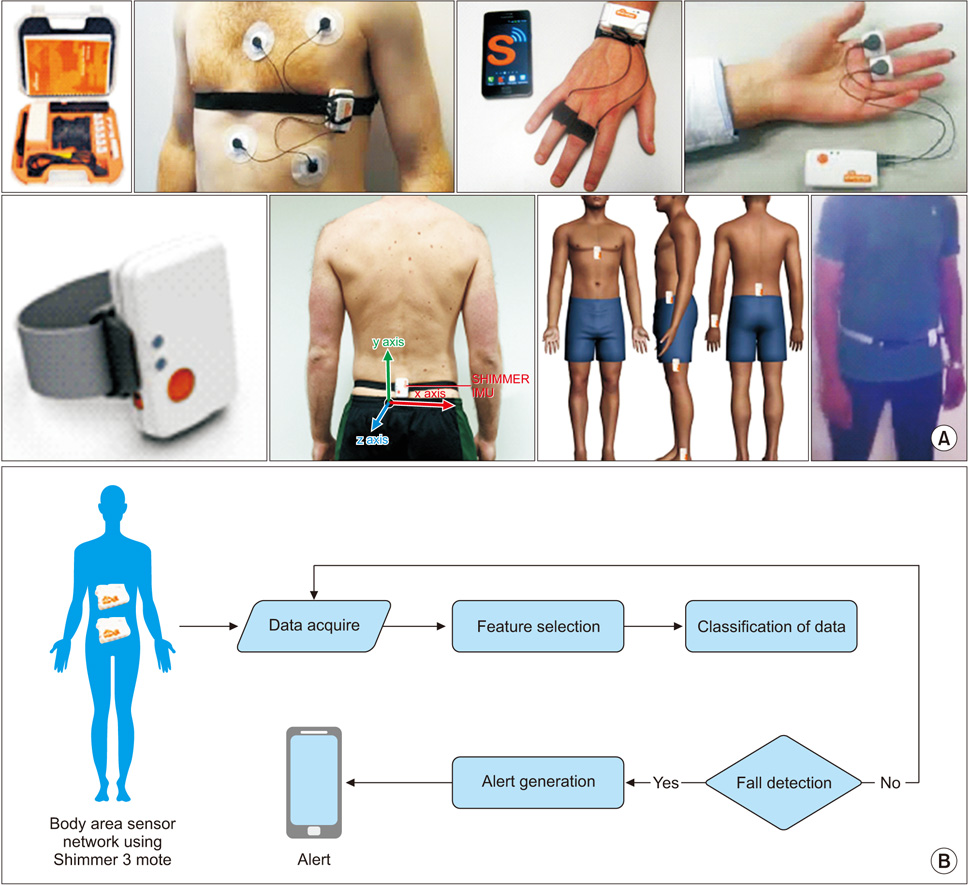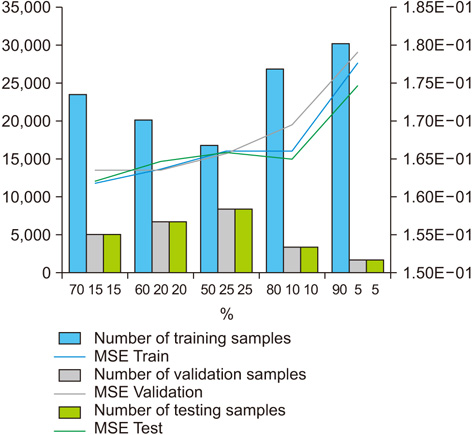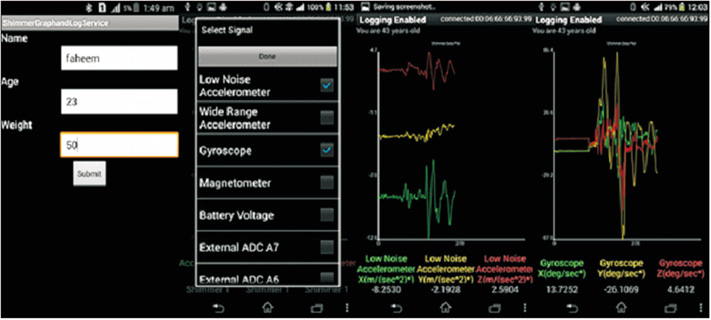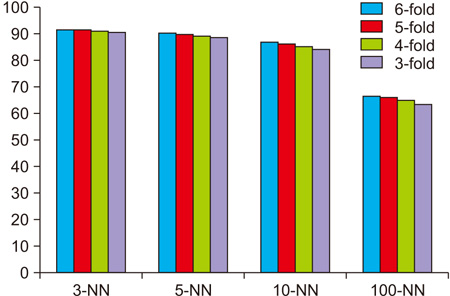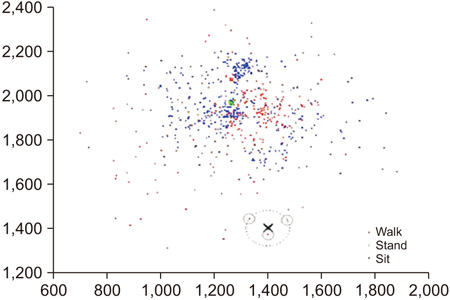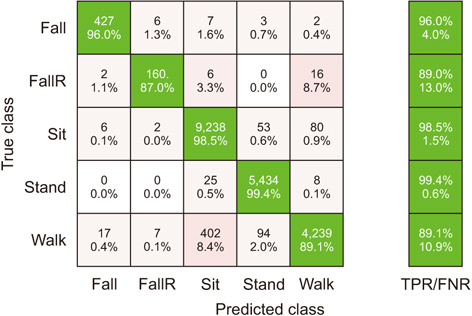Healthc Inform Res.
2017 Jul;23(3):147-158. 10.4258/hir.2017.23.3.147.
Fall Detection System for the Elderly Based on the Classification of Shimmer Sensor Prototype Data
- Affiliations
-
- 1Department of Computer Science, University of Karachi, Karachi, Pakistan.
- 2Faculty of Computer and Information System, Islamic University in Madinah, Madinah, Saudi Arabia. adnan.nadeem@iu.edu.sa
- 3Department of Computer Science, Federal Urdu University of Arts Science and Technology, Karachi, Pakistan.
- KMID: 2403304
- DOI: http://doi.org/10.4258/hir.2017.23.3.147
Abstract
OBJECTIVES
Falling in the elderly is considered a major cause of death. In recent years, ambient and wireless sensor platforms have been extensively used in developed countries for the detection of falls in the elderly. However, we believe extra efforts are required to address this issue in developing countries, such as Pakistan, where most deaths due to falls are not even reported. Considering this, in this paper, we propose a fall detection system prototype that s based on the classification on real time shimmer sensor data.
METHODS
We first developed a data set, "˜SMotion' of certain postures that could lead to falls in the elderly by using a body area network of Shimmer sensors and categorized the items in this data set into age and weight groups. We developed a feature selection and classification system using three classifiers, namely, support vector machine (SVM), K-nearest neighbor (KNN), and neural network (NN). Finally, a prototype was fabricated to generate alerts to caregivers, health experts, or emergency services in case of fall.
RESULTS
To evaluate the proposed system, SVM, KNN, and NN were used. The results of this study identified KNN as the most accurate classifier with maximum accuracy of 96% for age groups and 93% for weight groups.
CONCLUSIONS
In this paper, a classification-based fall detection system is proposed. For this purpose, the SMotion data set was developed and categorized into two groups (age and weight groups). The proposed fall detection system for the elderly is implemented through a body area sensor network using third-generation sensors. The evaluation results demonstrate the reasonable performance of the proposed fall detection prototype system in the tested scenarios.
Keyword
MeSH Terms
Figure
Reference
-
1. Pannurat N, Thiemjarus S, Nantajeewarawat E. Automatic fall monitoring: a review. Sensors. 2014; 14(7):12900–12936.
Article2. Yoshida S. A global report on falls prevention epidemiology of falls. Geneva, Switzerland: World Health Organization;2007.3. Rubenstein LZ. Falls in older people: epidemiology, risk factors and strategies for prevention. Age Ageing. 2006; 35:Suppl 2. ii37–ii41.
Article4. Sattin RW. Falls among older persons: a public health perspective. Annu Rev Public Health. 1992; 13(1):489–508.
Article5. Rosendahl E, Lundin-Olsson L, Kallin K, Jensen J, Gustafson Y, Nyberg L. Prediction of falls among older people in residential care facilities by the Downton index. Aging Clin Exp Res. 2003; 15(2):142–147.
Article6. McClure R, Turner C, Peel N, Spinks A, Eakin E, Hughes K. Population-based interventions for the prevention of fall-related injuries in older people. Cochrane Database Syst Rev. 2005; (1):CD004441.
Article7. Mitty E, Flores S. Fall prevention in assisted living: assessment and strategies. Geriatr Nurs. 2007; 28(6):349–357.
Article8. Mainwaring A, Culler D, Polastre J, Szewczyk R, Anderson J. Wireless sensor networks for habitat monitoring. In : Proceedings of the 1st ACM International Workshop on Wireless Sensor Networks and Applications; 2002 Sep 28; Atlanta, GA. p. 88–97.9. Sposaro F, Tyson G. iFall: an Android application for fall monitoring and response. ConfProc IEEE Eng Med Biol Soc. 2009; 2009:6119–6122.
Article10. Incel OD, et al. A smartphone based fall detector with online location support. In : Proceedings of International Workshop on Sensing for App Phones; 2010 Nov 2; Zurich, Switzerland. p. 31–35.11. Tacconi C, Mellone S, Chiari L. Smartphone-based applications for investigating falls and mobility. In : Proceedings of 2011 5th International Conference on Pervasive Computing Technologies for Healthcare (PervasiveHealth); 2011 May 23-26; Dublin, Ireland. p. 258–261.12. Neggazi M, Hamami L, Amira A. Efficient compressive sensing on the shimmer platform for fall detection. In : Proceedings of 2014 IEEE International Symposium on Circuits and Systems (ISCAS); 2014 Jun 1-5; Melbourne, Australia. p. 2401–2404.13. Ojetola O, Gaura E, Brusey J. Data set for fall events and daily activities from inertial sensors. In : Proceedings of the 6th ACM Multimedia Systems Conference; 2015 Mar 18-20; Portland OR. p. 243–248.14. Dau HA, Salim FD, Song A, Hedin L, Hamilton M. Phone based fall detection by genetic programming. In : Proceedings of the 13th International Conference on Mobile and Ubiquitous Multimedia; 2014 Nov 25-28; Melbourne, Australia. p. 256–257.15. Rakhman AZ, Nugroho LE. u-FASt: ubiquitous fall detection and alert system for elderly people in smart home environment. In : Proceedings of 2014 Makassar International Conference on Electrical Engineering and Informatics (MICEEI); 2014 Nov 26-30; Makassar, Indonesia. p. 136–140.16. Soto-Mendoza V, Garcia-Macias JA, Chavez E, Martinez-Garcia AI, Favela J, Serrano-Alvarado P, et al. Design of a predictive scheduling system to improve assisted living services for elders. ACM Trans Intell Syst Technol. 2015; 6(4):53.
Article17. Feldwieser F, Gietzelt M, Goevercin M, Marschollek M, Meis M, Winkelbach S, et al. Multimodal sensor-based fall detection within the domestic environment of elderly people. Z Gerontol Geriatr. 2014; 47(8):661–665.
Article18. Kansiz AO, Guvensan MA, Turkmen HI. Selection of time-domain features for fall detection based on supervised learning. In : Proceedings of the World Congress on Engineering and Computer Science (WCECS); 2013 Oct 23-25; San Francisco, CA.19. Brezmes T, Rersa M, Gorricho JL, Cotrina J. Surveillance with alert management system using conventional cell phones. In : Proceedings of 2010 5th International Multi-Conference on Computing in the Global Information Technology (ICCGI); 2010 Sep 20-25; Valencia, Spain. p. 121–125.20. Dai J, Bai X, Yang Z, Shen Z, Xuan D. Mobile phone-based pervasive fall detection. Pers Ubiquitous Comput. 2010; 14(7):633–643.
Article21. Kwolek B, Kepski M. Improving fall detection by the use of depth sensor and accelerometer. Neurocomputing. 2015; 168:637–645.
Article22. Lee JK, Robinovitch SN, Park EJ. Inertial sensing-based pre-impact detection of falls involving near-fall scenarios. IEEE Trans Neural Syst Rehabil Eng. 2015; 23(2):258–266.
Article23. Shimmer. Simmer2 IMU unit [Internet]. Dublin, Ireland: Simmer;c2017. cited at 2017 Jul 1. Available from: http://www.shimmersensing.com/shop/shimmer3.24. Park HA, Kim HJ, Song MS, Song TM, Chung YC. Development of a web-based health information service system for health promotion in the elderly. J Korean Soc Med Inform. 2002; 8(3):37–45.
Article25. Haghi M, Thurow K, Stoll R. Wearable devices in medical Internet of Things: scientific research and commercially available devices. Healthc Inform Res. 2017; 23(1):4–15.
Article26. Nadeem A. Data repository [Internet]. Karach, Pakistan: Adnan Nadeem;c2016. cited at 2017 Jul 1. Available from: http://adnan-nadeem.com/data-repository/.27. Suykens JA, Vandewalle J. Least squares support vector machine classifiers. Neural Process Lett. 1999; 9(3):293–300.28. Neural network overview [Internet]. Natick (MA): MathWorks;c2017. cited at 2017 Jul 1. Available from: http://www.mathworks.com/help/nnet/gs/neural-networks-overview.html.
- Full Text Links
- Actions
-
Cited
- CITED
-
- Close
- Share
- Similar articles
-
- The Literature Review for Fall in the Elderly
- Preliminary Report about the Efficacy of Prototype Pressure Sensor for the Real-Time Intravesical Pressure Monitoring in the Rabbit
- Evaluation of the IngVaL Pedobarography System for Monitoring of Walking Speed
- A Wireless Body Sensor Network and its Applications
- A Structural Equation Model of Fall Prevention Behavior among Community-dwelling Older Adults with Osteoarthritis


